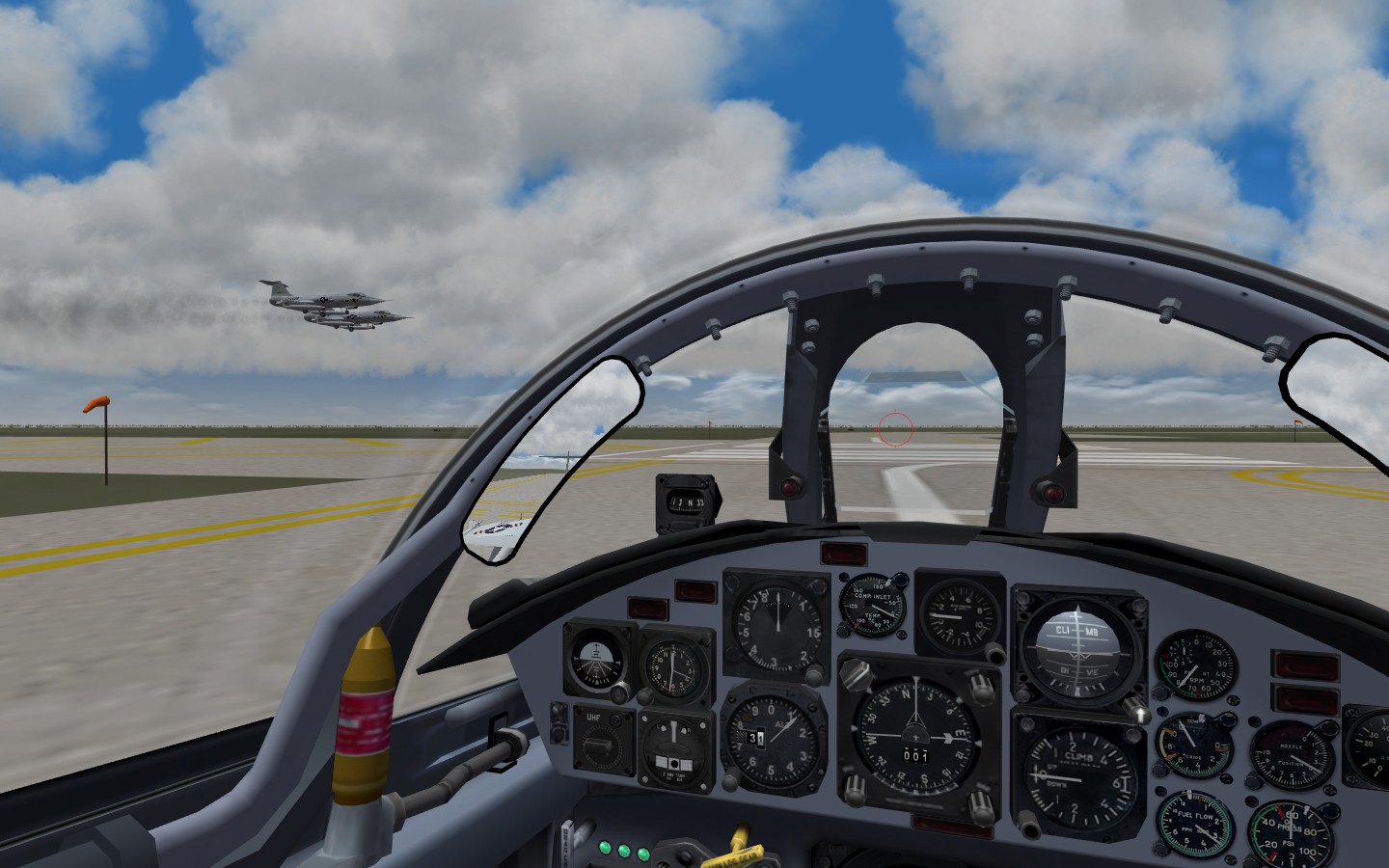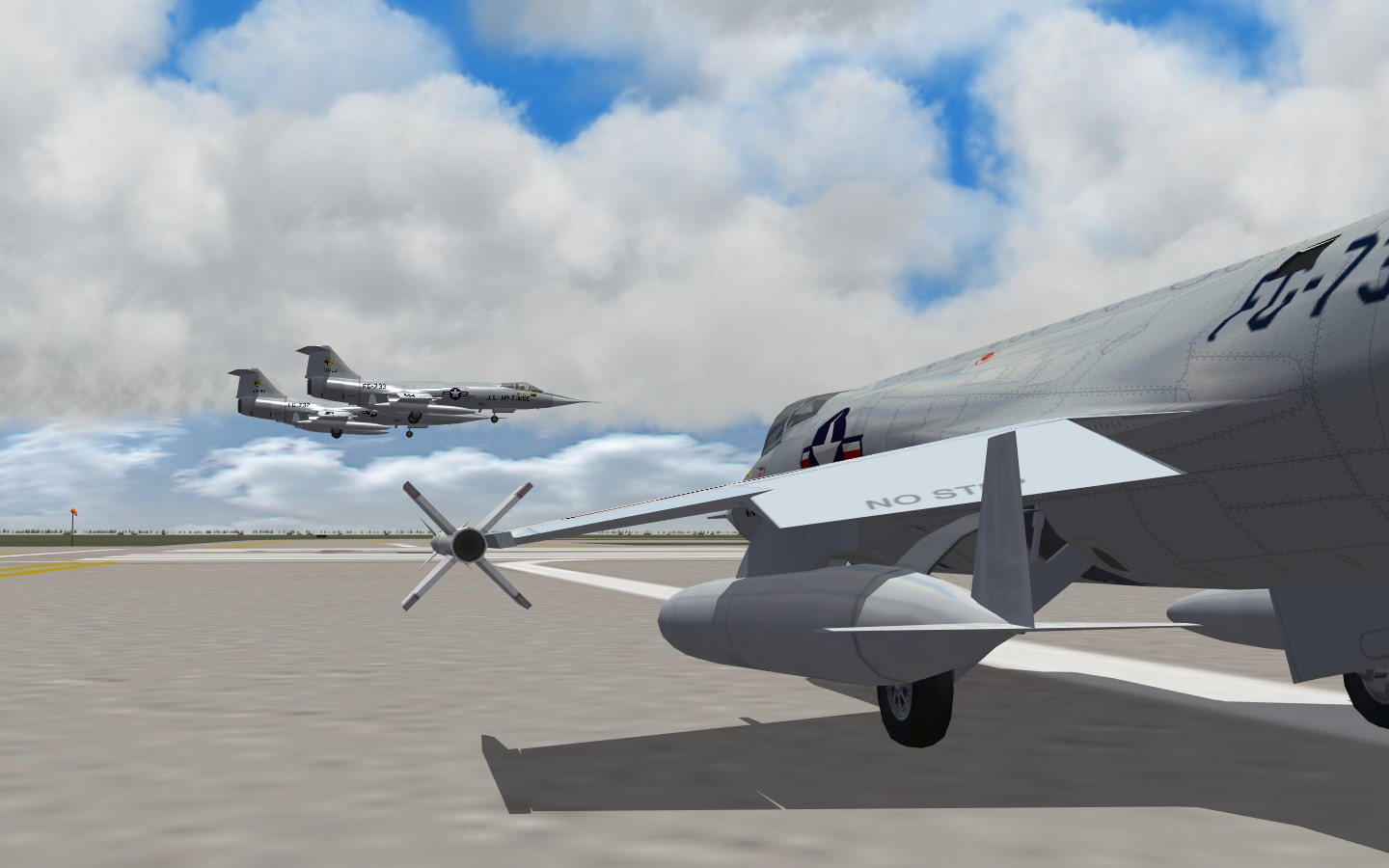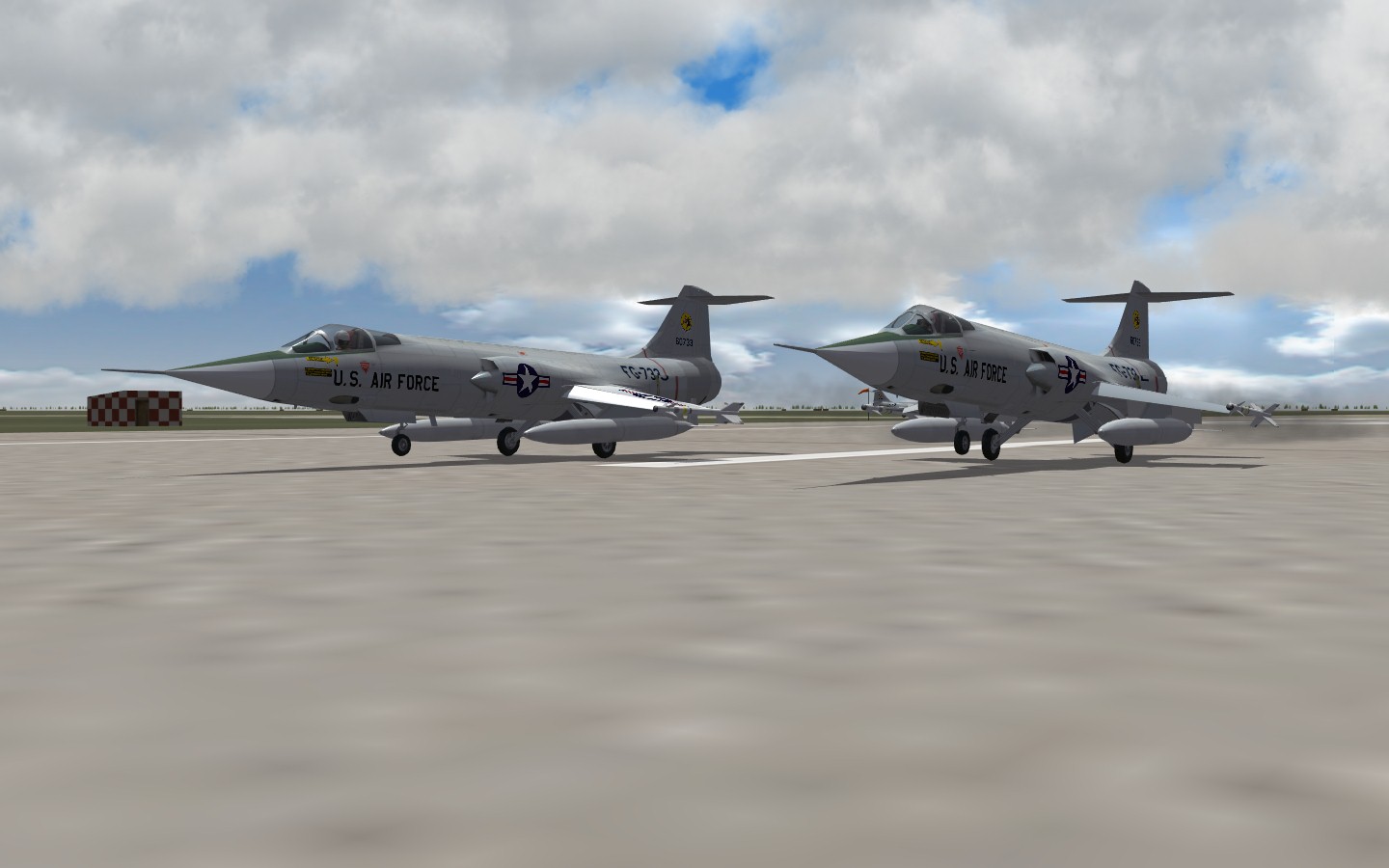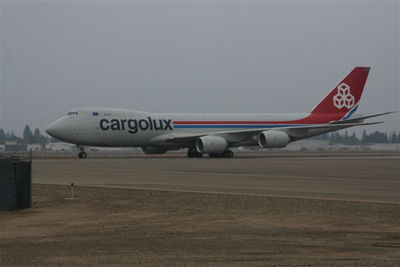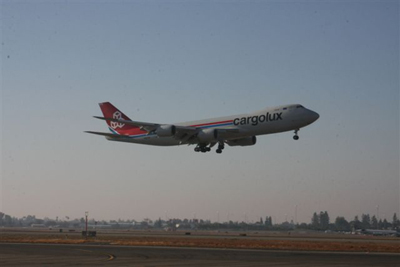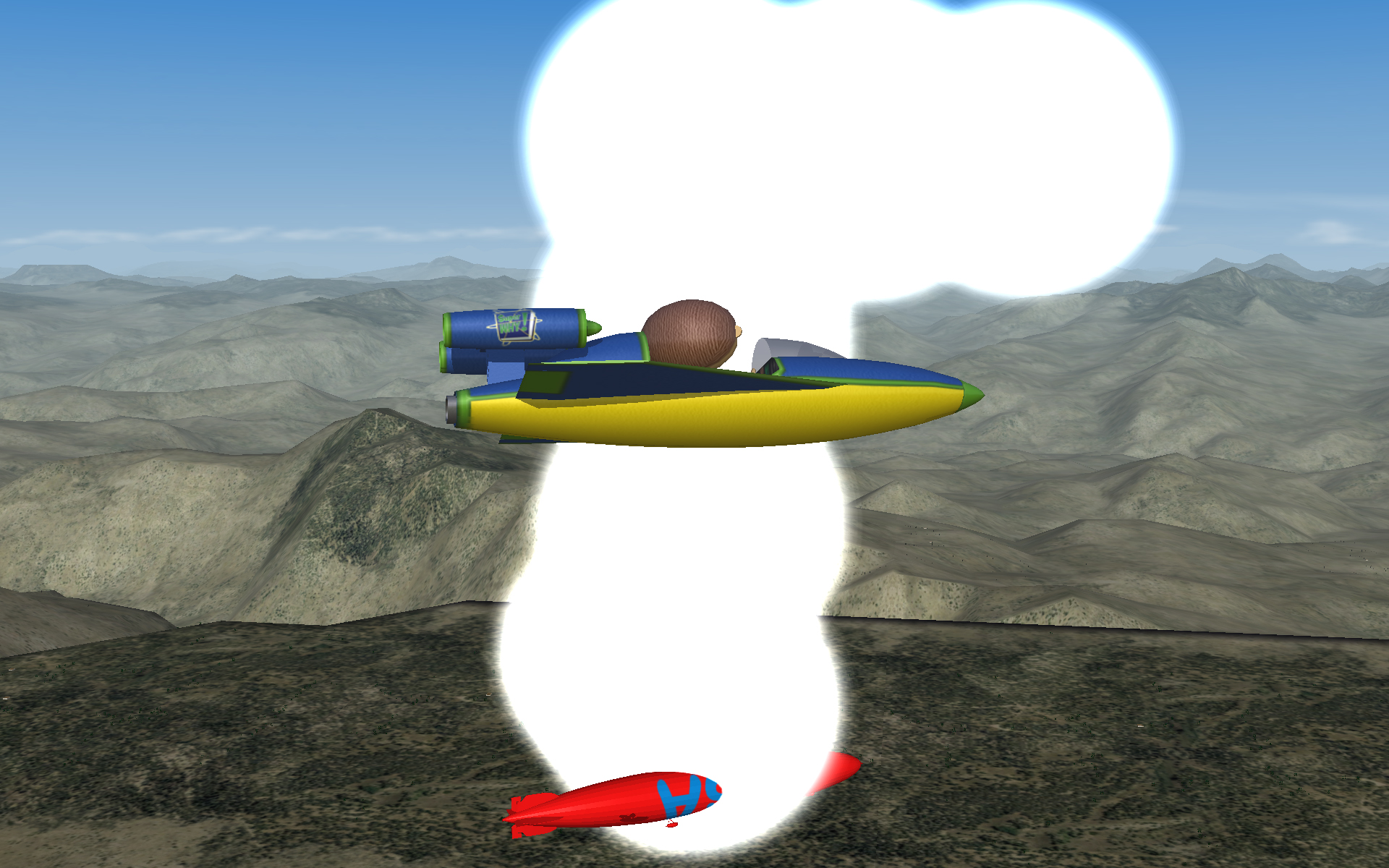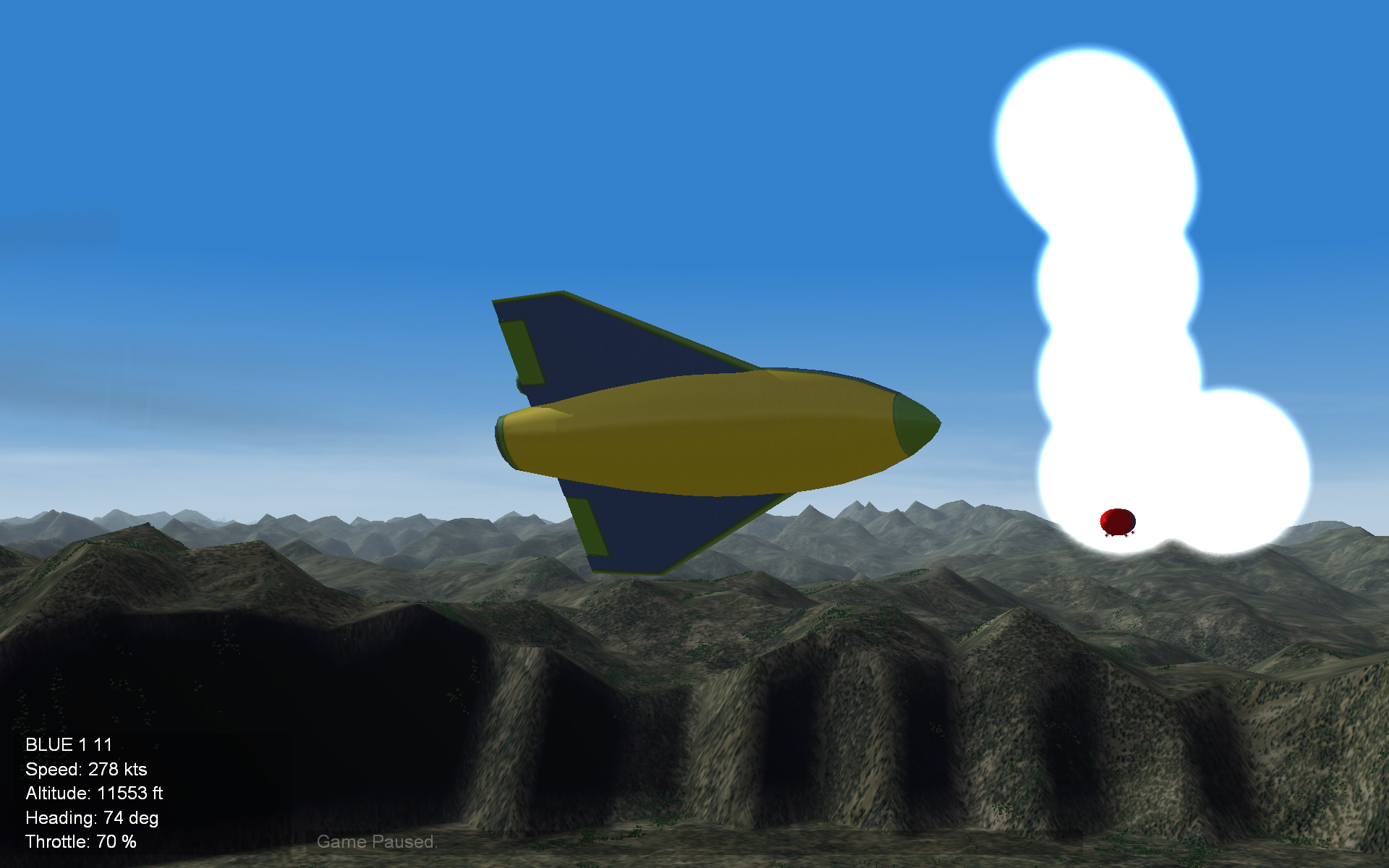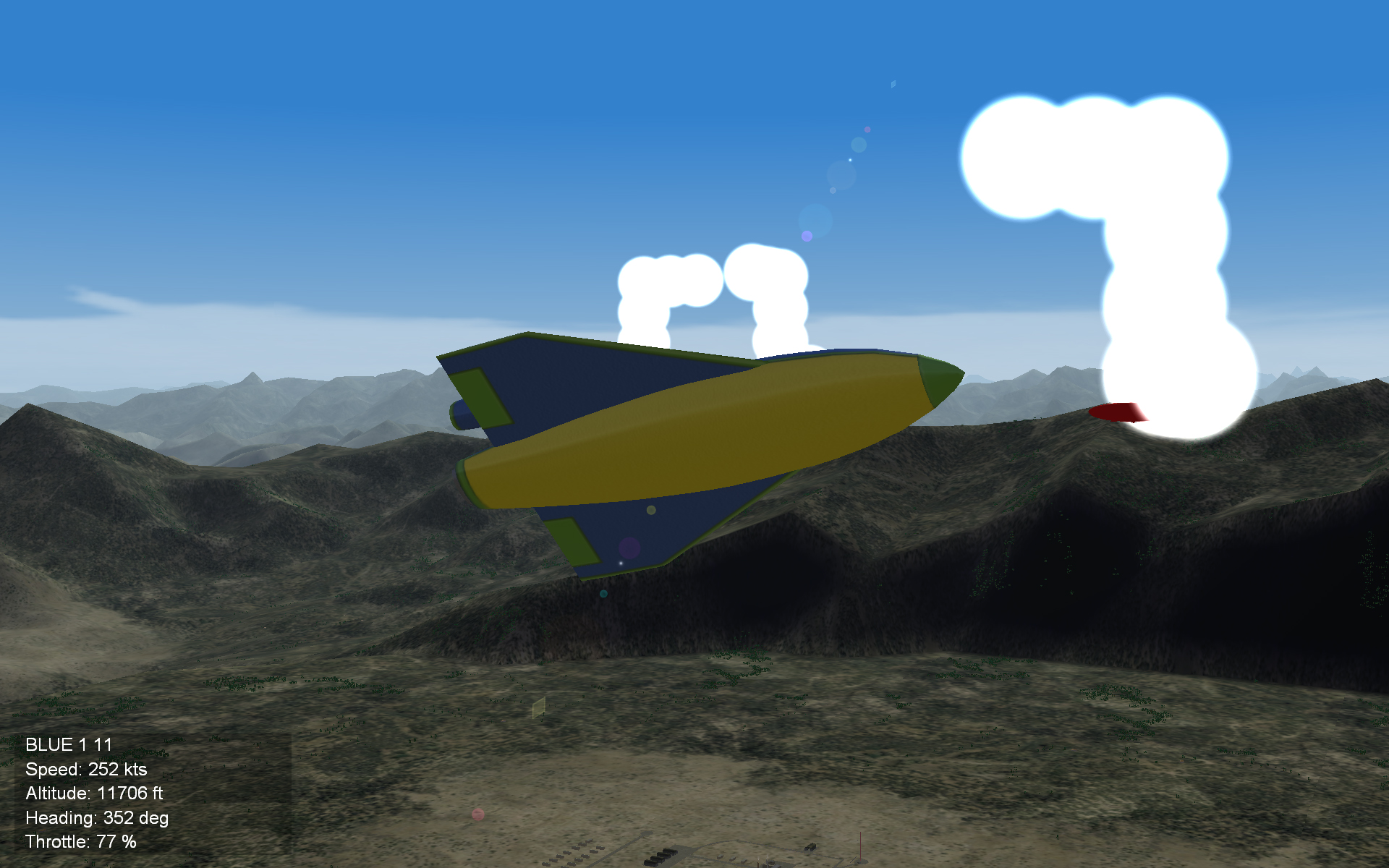-
Posts
8,142 -
Joined
-
Last visited
-
Days Won
16
Content Type
Profiles
Forums
Gallery
Downloads
Store
Everything posted by FastCargo
-

Drop down menu
FastCargo replied to Delta6Actual's topic in Site Support / Bug Reports / Suggestions
Did you try the little 'down arrow' to the right of your name? FC -

Where's Samuel L Jackson when you need him ?
FastCargo replied to Slartibartfast's topic in Military and General Aviation
It's sad really. All those people died due to one person's stupidity. They simply reacted the way most normal people would when faced with the same circumstance, not realizing their doing so would kill them. FC -

Dogfight: F-16 block 50\52 vs F-15C
FastCargo replied to SandMartin's topic in Military and General Aviation
From what I understand talking to the Viper bros, the Block 30 was considered the best overall close in dogfighter of the Viper series. The USN boys used them as aggressors (F-16N) and that was part of the reason. However, a clean Block 50 was no slouch...you could put one into a Max G turn, and at full grunt it would actually accelerate after being established in the turn. FC -

Fruit picker jailed for shining laser pen into RAF fighter pilot's eyes
FastCargo replied to Erik's topic in CombatACE News
True...but that's the thing. Polarization works at exactly 2 positions...the critical angle and 180 degrees from the critical angle. That leaves 358 degrees unprotected. It's like standing behind a stop sign post trying to hide from someone with a shotgun...random chance says you're probably going to get hit. FC -

Fruit picker jailed for shining laser pen into RAF fighter pilot's eyes
FastCargo replied to Erik's topic in CombatACE News
The reason your eye protection worked is because they were tuned to that laser's exact wavelength. Here a good link explaining laser eye protection: http://www.dermweb.com/laser/eyesafety.html The point to take away from this is that coatings must be tuned to that specific wavelength, or the laser will simply go right through. Even low power lasers can go right through your closed eyelid and leave an afterimage that takes several minutes to fade from your vision(I experienced this first hand with a handheld barcode scanner...don't ask). Trying to make a multi spectrum coating that covers most laser frequencies is easy...if you willing not to be able to see out the window. The main problem is not necessarily one of damage (though as pilots, it's VERY important to us)...it is one of distraction. That's why nobody addresses your invisible YaG laser...because unless you're pointing it directly at an NVG wearer, no one is going to notice (at least until he hears a 'pop' as his vitrous fluid starts boiling). When we got illuminated, it was as if a flash bulb was set off right outside the window. I lost my foval vision for several seconds, while the Captain got distracted when the whole cockpit lit up with the bright green glow. Now, the good thing is that it was off to the side, so he didn't get flash blinded, and had no issues continuing the approach (other than a quick "What the f*** was that?"), while I cursed and got the position on the knucklehead. Read the whole article, plus my posts. Distraction in the traffic pattern is the main concern for the handheld lasers, stuff that can't be combated against with technology because of the nature of laser light. FC -
Awesome review Rugg! FC
-

Fruit picker jailed for shining laser pen into RAF fighter pilot's eyes
FastCargo replied to Erik's topic in CombatACE News
Don't be absurd....your sarcasm is off the mark. Laser pointers make horrible combat zone weapons, because they basically are a big green 'drop a JDAM on my forehead' arrow pointing at their location. Considering the potential targets are probably armed, on the lookout for threats (SAMs, AAA, etc), and are high speed or high alt (exception being helos), a laser pointer isn't a great idea to try to down an aircraft in that regime. But, laser pointers make good terrorism weapons. They are unregulated, are great against 'soft targets', either commerical aircraft or military aircraft in the slow and low part of the envelope in a critical phase of flight. They can be stored, distributed and hidden easily, and the target probably can't instantly retaliate either at the moment of illumination because they are not armed, or aren't weapons hot at the time. As a person who has been blinded by one, it's not fun to shine one in someone's face. FC -

SF2 Screenshot Thread
FastCargo replied to Stary's topic in Thirdwire: Strike Fighters 2 Series - General Discussion
Now that's some heavy metal! FC -

Help a Newbie?
FastCargo replied to Toonz's topic in Thirdwire: Strike Fighters 1 Series - General Discussion
That's probably the better piece of advice... FC -

What would cause this?
FastCargo replied to ST0RM's topic in Thirdwire: Strike Fighters 2 Series - General Discussion
Check to make sure the landing gear names aren't different on the LODs. FC -

Help a Newbie?
FastCargo replied to Toonz's topic in Thirdwire: Strike Fighters 1 Series - General Discussion
Before you do anything, start here: http://combatace.com/forum/99-thirdwire-woewoiwovsf-1-knowledge-base/ If you do not start here, you will become hopelessly confused by the terms most folks use around here. Then, for WOV, a good campaign is this one: http://combatace.com/files/file/10281-wov-air-ground-war-expansion-pack-gold-part-1/ Realize there are 3 parts of the basic download, plus 2 updates. Read all the readmes! FC -

Screen Shots From Beta Version
FastCargo replied to Dave's topic in Digital Combat Simulator Series General Discussion
Oh come on Dave... B-Eagle = Beagle! FC -

Screen Shots From Beta Version
FastCargo replied to Dave's topic in Digital Combat Simulator Series General Discussion
Dang that's pretty! FC -

latest on merged installs
FastCargo replied to luckyluca's topic in Thirdwire: Strike Fighters 2 Series - General Discussion
That's what I've noticed as well...reducing a particular mod's aircraft requirements to only what it used vastly speeds up loading...esp on slower computers. FC -

Navigation Mode
FastCargo replied to aggressor16's topic in Thirdwire: Strike Fighters 2 Series - General Discussion
Yep, there's a key for that...check the Options panel, Controls, Keyboard, Customize... FC -

SF2 Screenshot Thread
FastCargo replied to Stary's topic in Thirdwire: Strike Fighters 2 Series - General Discussion
A bit of slight of hand, but good enough for the purpose. Expect a release soon... FC -

SF2 Screenshot Thread
FastCargo replied to Stary's topic in Thirdwire: Strike Fighters 2 Series - General Discussion
-

WSJ: FAA Modifies Airspace Restrictions for New Boeing Jets
FastCargo replied to FastCargo's topic in CombatACE News
Related article: New 747 cargo plane tested at Fresno airport Boeing 747-8 is a jumbo freighter. Posted at 11:22 PM on Monday, Sep. 27, 2010 By Tim Sheehan / The Fresno Bee Photos by Joe Contreras Article A spanking-new Boeing 747-8 cargo airplane and one of its older siblings rumbled through the skies over Fresno on Monday, part of a flight-test program before the giant jet is delivered to its first commercial customers. Boeing is testing its new jumbo freighter at Fresno Yosemite International Airport and several other airports to learn about its flight characteristics in different conditions, Tim Bader, a spokesman for the company, said. The second airplane, a Boeing 747-400, is accompanying it so engineers can compare the two aircraft. The new 747-8, outfitted in the red, white and blue paint scheme of its future owner, Luxembourg-based Cargolux, and its Boeing-blue-and-white companion, flew to Fresno from different airfields near Boeing's manufacturing plant in Everett, Wash. The 747-8 that flew around Fresno on Monday is one of only four built so far, Bader said. Their arrival within minutes of each other about 11 a.m. Monday attracted a crowd of onlookers to streets with a vantage point of the airport runway. Some spectators began gathering on a frontage road next to Chestnut Avenue, near the northwest end of the runways, a couple of hours before the planes touched down. "It's not often that something that big and that technologically advanced comes to Fresno," said Lorence Liscano, a self-described aviation fan and technology buff. "It's going to be the biggest civilian airplane in the world. ... This is big-time." The 747-8 is the newest member of Boeing's 747 family, and with a wingspan of almost 225 feet and a length of more than 250 feet, it's also the largest -- 13 feet wider and 18 feet longer than the 747-400. It boasts a cargo capacity of almost 148 tons -- about 20 tons more than the freighter version of the 747-400. "I'm just impressed and heartened by these big aircraft coming in here," said Tom Skypeck, who bicycled with his wife, Jeanette, from their Fresno home to the airport. "It makes you proud that they chose this place to do the testing." Skypeck, a retired high school teacher who was also a career Air Force man, was armed with a video camera and a radio scanner tuned to the airport's frequency. He listened in as the Boeing test pilots talked to air-traffic controllers when pilots maneuvered their planes over the Valley. After landing, the 747-8 trundled down the taxiway, followed by the 747-400. About 15 minutes after it touched down, the big jet roared back down the runway, kicking up a cloud of brown dust before lumbering into the sky. The 747-400 followed suit about 8 minutes later. The two jets then swung large arcs around the airport before passing over the runway, each making two low-level flyovers scarcely 60 feet off the ground. By 12:15 p.m., both jets had completed their maneuvers over Fresno and were winging their way to San Bernardino. Airport officials said the testing program is expected to visit Fresno intermittently over the next couple of months. Under a formula based on aircraft weight, Fresno Yosemite International will send a bill to Boeing for landing fees for the two jets. Those charges have not been calculated, said Vikkie Calderon, an airport spokeswoman. Monday wasn't the first time Fresno has hosted gigantic aircraft. The largest airplane ever to visit the airport was an Antonov 124-100, a Russian-built cargo monster that spent several days here in 2001. And on several occasions since 1995, presidents have been ferried to and from Fresno aboard Air Force One. -
WSJ: FAA Modifies Airspace Restrictions for New Boeing Jets Photo by Joe Contreras By Andy Pasztor and Peter Sanders Of THE WALL STREET JOURNAL Article A week after issuing interim rules to protect aircraft from the wake turbulence generated by Boeing Co.'s (BA: 70.39 ,-0.97 ,-1.36%) latest jetliner models, federal regulators abruptly reversed course and said the restrictions were premature. The FAA's surprise move on Tuesday left industry officials and safety experts uncertain about the potential hazards of flying closely behind the 787 Dreamliner and the larger 747-8, both of which are currently undergoing flight tests. The original rules mandated many aircraft maintain roughly double the typical distance when flying behind other widebody Boeing or rival Airbus aircraft. The situation was further confused when an FAA spokeswoman said the interim rules--distributed to air traffic controllers nationwide--contained "some mistakes." The guidelines were signed on Sept. 27 by Nancy Kalinowski, an FAA vice president of system operations services in the air traffic organization. But the spokeswoman, Laura Brown, also said the replacement standards, which could be announced shortly, may turn out to be similar or in some cases identical to those that were withdrawn. Ms. Brown didn't provide details about the revised airspace separation guidelines. Boeing officials on Monday said only they were in discussions with the FAA about the agency's initial restrictions placed on aircraft following the Dreamliner and the 747-8. The interim rules, requiring aircraft to remain at least 10 miles behind the new Boeing jets during large portion of the descent towards the airport, would have remained in effect until October, 2011. By then Boeing expects to deliver a handful of 747-8's and possibly more than a dozen Dreamliners to airlines. Such spacing and other restrictions--especially around busy hub airports--could frustrate airlines such as All Nippon Airways Co. (9202.TO), Japan Airlines Corp. and Cargolux Airlines International S.A. that are among the first slated to put the Boeing models into service. Boeing 787s are scheduled to commence passenger service with ANA after the first quarter of 2011, and the first deliveries of 747-8 cargo planes also are expected to occur around the middle of next year. Maintaining extra safety margins during late phases of approaches to congested airfield could reduce overall capacity and complicate the introduction of the new jets. The FAA's notice said studies indicate that wakes generated by 747-8 and 787 models--essentially cones of spinning air spreading out from the tip of each wing--"may be more substantial than those" created by existing wide-body or jumbo jets such as the Boeing 747-400 or Airbus A340. Nearly three years behind schedule, the 787's development has been beset by design issues, manufacturing problems and engine malfunctions. Development of the stretch 747 has been delayed by production and testing difficulties, including aerodynamic issues discovered during flight tests that could affect its wake characteristics. Copyright © 2010 Dow Jones Newswires
-

Screenshot Thread
FastCargo replied to Dave's topic in Thirdwire: Strike Fighters 1 Series - General Discussion
Did you say you want volumetric clouds? Calling Lexx Luthor...I have a project for you... PM me...I think I have the answer... FC -

What Happened?!?! Where is everyone?
FastCargo replied to quack74's topic in Thirdwire - First Eagles 1&2
That's very uncharacteristic of TK. He's usually real good at solving problems quickly. One thing I would do is check your spam folder...make sure his email links or response didn't get sent straight to the trash (check your ISP too on that). Second, have you posted directly in the Tech Support part of the ThirdWire (not here) forums yet? FC -
SpaceShipTwo Flies Free SpaceShip Two Flies Free SpaceShipTwo, the spacecraft that will take paying passengers to the edge of space, had its first manned free flight Sunday, dropping from the launch aircraft mothership Eve 45,000 feet above the Mojave Desert. Owner Virgin Galactic said the spacecraft, now named VSS Enterprise, glided to successful landing 11 minutes later at the Mojave Air and Space Port in the high desert of California. On board were pilot Pete Siebold and copilot Mike Alsbury. Virgin founder Sir Richard Branson was on hand in Mojave with his trademark enthusiasm in full force. "Now, the sky is no longer the limit and we will begin the process of pushing beyond to the final frontier of space itself over the next year," Branson said. All gushing aside, there were some substantial practical accomplishments achieved with the flight. As the first commercial suborbital space venture, Virgin is being watched closely by government and the industry and safety is, of course, a primary consideration. All systems were checked, the reusable spacecraft's stall characteristics and general flight behavior were assessed and actual performance was checked against data projected by simulation. Siebold and Alsbury got in one practice approach at altitude before heading for the real thing. "The VSS Enterprise was a real joy to fly, especially when one considers the fact that the vehicle has been designed not only to be a Mach 3.5 spaceship capable of going into space but also one of the worlds highest altitude gliders," Siebold said.



